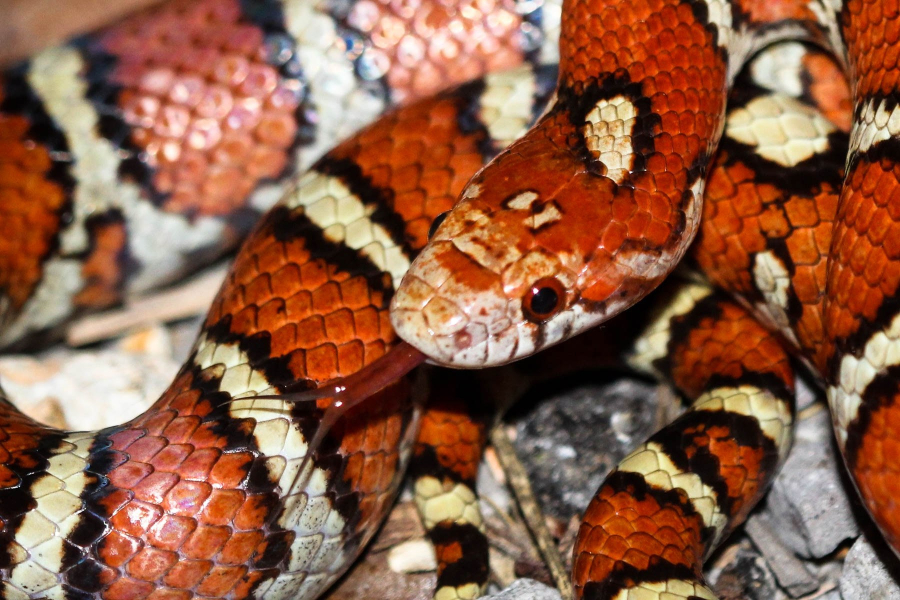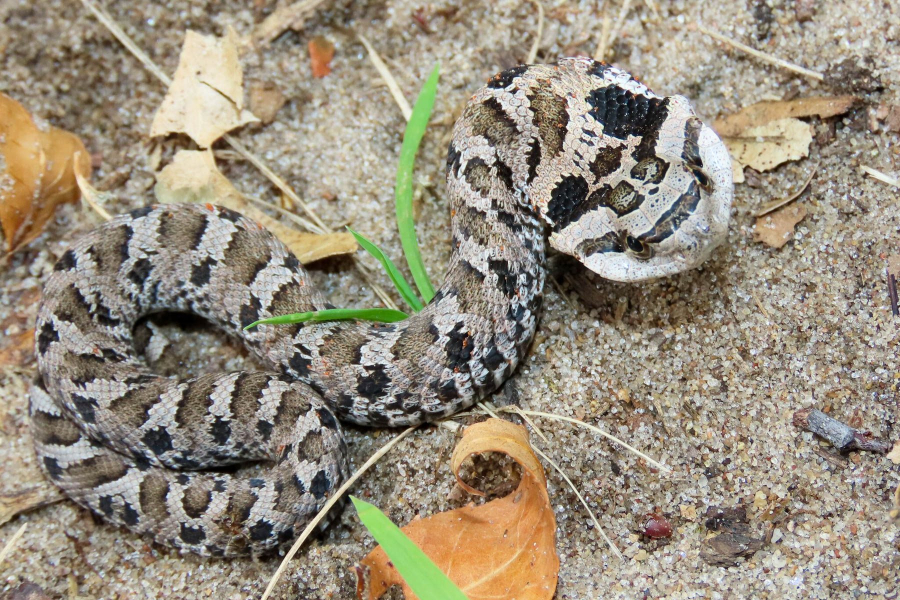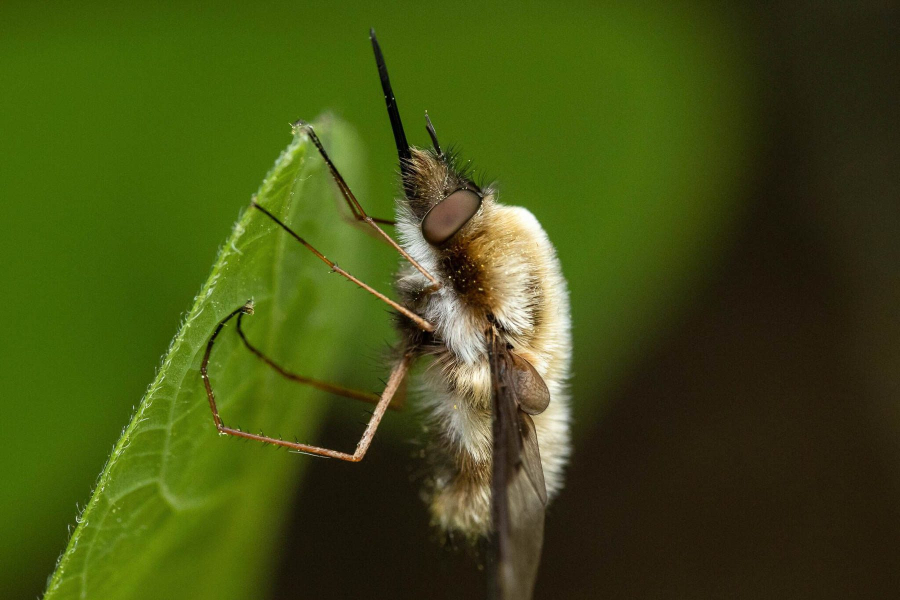These creatures celebrate Halloween every day with their permanent costumes
Five critters around the watershed use mimicry to protect themselves

Every year, Halloween gives us the freedom to dress up as someone or something we’re not. Even though we only get to do it for a day, there are creatures around the Bay watershed that get to stay in costume all year long! Here are five critters that use mimicry to stay spooky year round.
Milk snake
The Milk snake is a harmless, nonvenomous species that uses batesian mimicry to appear as the dangerous Coral snake, which is part of the cobra family. Both species have bright colors that alert danger to potential predators, despite the milk snake posing no real threat. Milk snakes are well equipped to protect themselves from predators, as they are also able to mimic rattlesnakes by vibrating their tails at the first sign of danger.
Although there are many different subspecies of the milk snake, they all have a similar diet of other reptiles, small mammals and birds and rodents. While they also seem comfortable in an array of different habitats, they can be most commonly found around the watershed in forested areas.

Viceroy butterfly
The viceroy butterfly costumes itself as the monarch butterfly to avoid predators using mullerian mimicry, where two equally toxic species co-mimic to benefit each other. Biologists once thought that the viceroy butterfly used batesian mimicry, since they were believed to be non-toxic, but they seem to have evolved a toxin and/or foul taste that adds an extra layer of protection beyond their coloring.
The viceroy butterfly can be found in meadows, marshes and swamps across the watershed, and unlike monarchs, they do not migrate. Even as caterpillars, viceroys and monarchs closely resemble each other before undergoing metamorphosis.
While these two butterflies contain toxic chemicals, they pose no harm to humans.

Hognose snake
The hognose snake is a mildly venomous creature that is not dangerous to humans, although they use batesian mimicry to display a similar defense mechanism to that of a cobra. When they feel threatened, the Hognose snake will suck in air and inflate the skin around their heads and neck, all while hissing and lunging at the predator. Some species of Hognose snakes such as the Western hognose can also mimic rattlesnakes by flattening their heads and rattling their tails.
Despite their intimidating act, the hognose snake almost never bites. Their diet consists of small mammals, toads, frogs and other invertebrates. This species can be found in habitats with sandy or gravelly soil throughout the Bay area.

Spicebush swallowtail caterpillar
Before emerging as a beautiful black and blue butterfly, the spicebush swallowtail caterpillar will go through five molts, all mimicking something else in order to keep themselves safe. During the first three molts, this species of caterpillar will appear as bird droppings in coloration and size. With its main predators being different species of birds, they come across as very unappealing for food. During its final two stages before pupating, the caterpillar will appear either green or orange and has very large eye spots in order to mimic a snake’s head. Even when it is time for the Spicebush swallowtail to form a chrysalis, it still is protected from predators, as the chrysalis looks like a curled up leaf.
The Spicebush swallowtail can be found in woodland habitats throughout the watershed.

Bee fly
With fuzzy bodies and a long proboscis that looks like a stinger at first glance, the bee fly looks much more like a bee than a typical fly. This imitation allows the fly to deter would-be predators even though they are harmless.
What isn’t so harmless about the bee fly is that they will sneak into underground bee nests, consume juvenile bees and then eat nectar collected by the mother.
As adults, Bee flies are very important pollinators. Bee flies can be found in forests, meadows and gardens all throughout the Bay watershed.

While the rest of us prepare to disguise ourselves in costume once a season, these creatures keep the spirit of Halloween alive for the rest of the year!

Comments
There are no comments.
Thank you!
Your comment has been received. Before it can be published, the comment will be reviewed by our team to ensure it adheres with our rules of engagement.
Back to recent stories